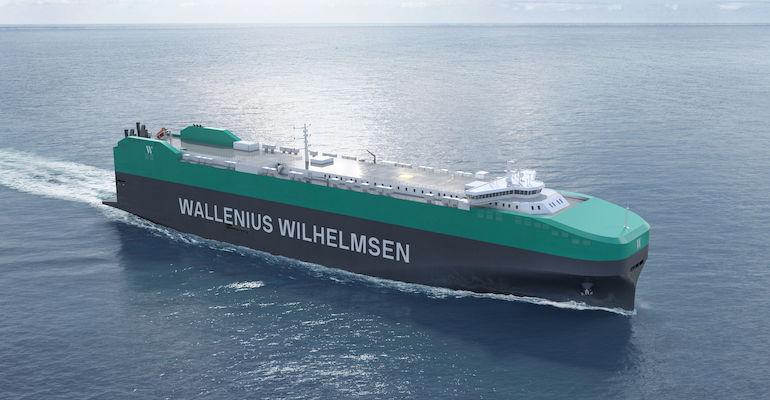Following confirmation of what WW says is a 4+4+4 order, with the initial contract at China Merchant’s Jinling Shipyard for four firm orders and eight options, which Xavier Leroi – EVP & COO Shipping Services at WW – will replace older tonnage but could also boost capacity in what is expected to remain a tight market sector.
The company describes the order as a 4+4+4 because with three vessel operators, Eukor, WW and the American Roll-On Roll-Off Carrier, in the company’s stable. Leroi explained that the new vessels cold be deployed by any of these companies and confirmed one of the ships will be on dedicated trades.
Addressing the issues around safety Leroi said the new vessels will have double the firefighting capabilities when compared to older tonnage, with double the level of CO2 and airtight compartments to mitigate the effects of electric car fires.
“We are still learning about the hazards involved in electric car fires, we know they do not happen very often, but when they do they are very intense and will need a lot of water to call them down,” said Leroi.
He conceded that cooling lithium-ion battery fires with water could ultimately make a ro-ro vessel unstable, but he considered the use of water and the instability it could cause was the “lesser of two evils”.
“There are between 140 and 160 ro-ro newbuildings on order,” explained Leroi, “but there are two schools of thought one is that new capacity will be needed in a market that is struggling to meet demand, and the other is that new capacity will be needed to meet new environmental regulations.”
Without being specific Leroi said that the company’s 128-vessel fleet is ageing that is that many of the ships are between 13 and 15 years old. The new vessels will be dual fuel, and will operate on diesel or methanol.
“We are aiming for our new ships to leave Jingling yard on methanol in 2026,” said Leroi, but he admitted the company is still searching for a partner to provide green methanol as fuel for the new ships.
“We will only invest in technology that will move us closer to the net zero target,” said Leroi, ruling out ordering LNG, which he said was a transitional fuel which he believed would see few orders going forward.
WW has a “high ambition to decarbonise before 2050,” and for that the company needs partners to source green fuels and will also want to charter modern green tonnage, to maintain its fleet at around the 130-vessel mark.
Leroi expects that the car market will continue to be challenged in the coming years. Currently, Leroi admits that the ro-ro market challenges “have not eased at all”. Forwarders say that they have started loading some cars into containers because that market is seeing depressed rate levels, and the cars can be moved quicker, the current wait times for a roro order is three months.
WW said ro-ro capacity is likely to remain tight in the coming years and so with new emissions regulations coming into force, such as the EU Emissions Trading System (ETS) and the increasingly stringent Carbon Intensity Indicator will see older vessels retrofitted with energy saving devices as well as emissions abatement technology.
Slow steaming will also be a feature in an effort to meet those regulations and that, said Leroi, “Is a de facto reduction in vessel capacity”.
Copyright © 2024. All rights reserved. Seatrade, a trading name of Informa Markets (UK) Limited.
Add Seatrade Maritime News to your Google News feed.  |

